Quantity before quality
Innovation isn't something that can be readily commanded. To stimulate innovative ideas, extensive practice and a fearless approach to failure are essential. External fear and pressure often hamper our creativity. To truly succeed, one must accept and rebound from failure, embracing continuous action. Picasso, for example, produced around 20,000 pieces of art, with only a fraction achieving fame. Emulate him: work persistently, understanding that much of it might not be brilliant or even usable. Don't shy away from seemingly foolish or absurd ideas. Great ideas often emerge from a heap of bad ones. By staying in a continuous creative process, you'll gradually improve your outcomes. This principle of trial and error isn't just for physics experiments; it applies to any domain in which you're engaged.
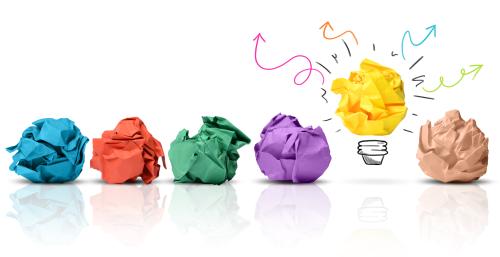
Sketch, prototype, and explore what might work. Experiment with different activities, new hobbies, sports, and food. Engage with unfamiliar things: watch a program you normally wouldn't, explore a foreign website translated into English — these actions will broaden your horizons.
Maintain a Light Approach
Often, our best ideas emerge in casual settings, like in the shower or during a walk, during mild exercise, or even while intoxicated. This phenomenon isn't random; these activities alter our brain waves compared to a state of intense concentration. When we're fixated on a problem, we tend to intensify our focus, which may narrow our perspective and direct it towards irrelevant aspects. Broadening our attention through relaxation, mindfulness, and introspection can lead to breakthroughs. During these essential pauses, our brain continues to process information and generate solutions. Breaks aren't just a necessary evil; they're a crucial part of the workflow.
The Smartphone: A Creativity Blocker
It's been established that many good ideas surface just before we drift off to sleep or immediately after waking up. However, using our smartphones during these periods can stifle our emerging thoughts.
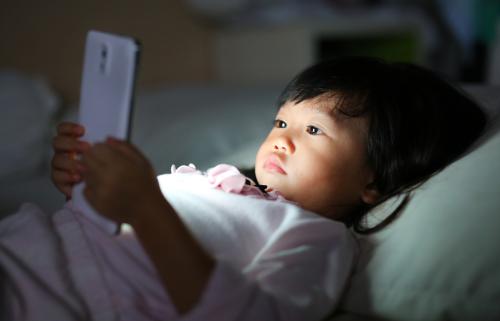
In the realm of creativity, procrastination isn't entirely negative: although it hinders productivity, it can boost creativity. It offers time for our subconscious to develop thoughts further, leading to new ideas. Melina Marseille and Tanja Gabriele Baudson refer to this process as "reflected rumination." Adam Grant observed that creative individuals often start projects enthusiastically but may take longer to complete them. He recommends finding a balance between procrastination and precrastination—putting things off and wanting to complete everything at once.
Creativity requires a stress-free environment. Stress, which is largely self-imposed, redistributes blood flow in the brain, impeding creativity. Wojciech Eichelberger refers to Einstein, who, when thinking about complex problems, always retreated to another room where he practiced the violin. Wojciech Eichelberger suggests finding a personal "violin" akin to Einstein's, an activity that allows us to relax and reset our brains.

Pursue Your Passions
U.S. actor Ethan Hawke asserts that we must permit ourselves to be creative. Because our lives are structured around habits, many of us neglect our passions. According to Hawke, discovering and honing what we love and excel at reveals our true identity. Expressing one's hidden passions and pursuing one's calling constitutes genuine creativity. But to show yourself, you must first know yourself. For Hawke, creativity isn't merely an enriching aspect of life; it's a healing process. He advises, "Don't read the book you're supposed to read, read the one you want to read."
Diving into a creative field
While creativity can certainly be nurtured individually, immersing oneself in a creative environment can amplify creative output, even if one doesn't consider oneself a creative genius. Olaf-Axel Burow introduces the concept of a "creative field"—an environment saturated with creativity due to the presence of numerous creative individuals. Silicon Valley is a prime example. In such a field, like-minded, equally creative individuals collaborate, each bringing different strengths. They not only complement one another but also stimulate and inspire each other. The prerequisite for this is mutual respect, a willingness to learn, and recognition of each other's skills. A functioning team is aware of its members' strengths and weaknesses. Burow uses Steve Jobs as an example, noting that Jobs sought suitable partners to complement his skills and realize his vision of a computer, driving development forward.
Free Improvisation
As a model for a creative field, Burow cites the "jazz band model of leadership": a group of expert musicians making music together. They've agreed on a theme beforehand and play together without a conductor. This collaborative spirit can create an infectious mood that resonates with the audience, inciting applause, energetic participation, and cheer. This potent resonance field between musicians and listeners is similar to the electrifying atmosphere at a home soccer game.
A creative product emerges when several individuals with diverse talents collaborate. Synergistic teams are most creative when there's a lively exchange among members. Companies find such creative teams most successful when hierarchies are flat, avoiding authoritarian leadership. A climate of creative competition, where everyone is motivated, can lead individuals to perform extraordinarily.
The Power of Perseverance
Creativity is often described as one percent inspiration and 99 percent perspiration. Creative endeavors can be draining. Having a great idea isn't enough—tenacity in implementation and perseverance in the face of obstacles are key. So, a final tip: stick with your project, it's worth the effort!
Fostering Creativity in Children
Encourage your children to explore and discover their interests without micromanaging their free time. If they ever get bored, that's perfect! It teaches them to handle frustration and encourages them to seek solutions or activities themselves. If children discover their passions early, they are less likely to grow into adults with no hobbies or ways to occupy their free time.
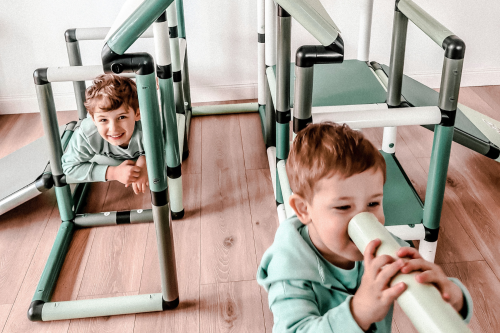
Children should have a designated space for themselves where they can explore and experiment freely. The area need not be an entire room—a corner or a section would suffice. The point is that they can explore and express themselves freely.
Above all, children should be allowed to make mistakes. They learn from them. Our wealth of experiences as adults is the sum of all our past mistakes. Being creative means trying things out without fearing the right or wrong outcome. Early criticism can stifle a child's creativity permanently.
Creative daycare
Joanna Żarniewska, a daycare educator in Poland, emphasizes the importance of educators themselves possessing creative skills if they wish to inspire creativity in children. Creativity doesn't always mean artistic talent; it can manifest in gardening, crafts, or cooking. An educator with a "creative antenna" can weave creative exercises into the daily routine. This can be applied in language learning, thinking processes, and even sports.
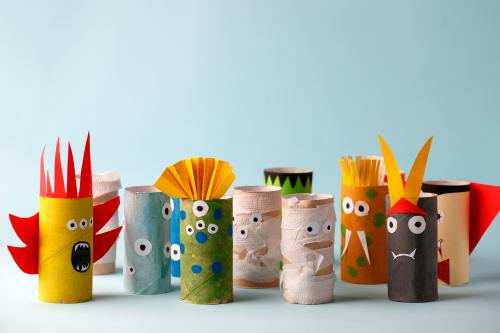
Żarniewska introduces a creative warm-up exercise: have the little ones list all the red items they can think of, or things that are soft, or items that make noise. Even simple exercises like this boost children's self-esteem because every answer is correct. Other exercises include making analogies, connecting unrelated objects, and chain association exercises.
She also encourages children to think creatively about everyday problems and possible solutions. Open-ended questions like: "What if there were only children in the world and no adults?" or "What other uses can a sheet of paper have besides writing?" promote imaginative thinking.
One classic creative exercise involves starting a story and letting the children continue it in their own way, sometimes providing certain words that need to be incorporated. Even during physical activities, children can exhibit creativity by devising their own warm-up exercises.
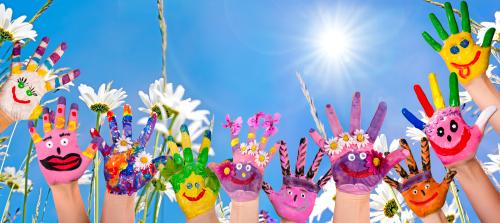
The New Role of Teachers
The role of teachers is shifting—from omniscient distributors of knowledge who have an answer to every query, to becoming mentors, coaches, and motivators. As Sir Ken Robinson asserted in his 2013 TED Talk: A school is only as good as its teachers. Just like in a daycare center, teachers who aspire to foster creativity in their students should not only be creative themselves, but they also need to be well-acquainted with established creativity theories. Often in schools, the precise definition of creativity remains obscure. Besides, teachers should understand how creative processes work and how creative individuals function. Creative students often challenge what the teacher presents as truth and highlight problematic areas. These students may find it difficult to accept authority—teachers should be able to handle this confidently, partly due to their professional competence. Teachers earn respect through authenticity and knowing their limitations.
An open-minded and articulate teacher aids students in developing into autonomous, self-effective individuals, which are prerequisites for creative action. The role of an educator is pivotal as a single exceptional teacher can help children discover their abilities and enjoyment of a particular subject, often having a lifelong impact. The more inspiring teachers a school has, the higher the students' developmental potential, leading to more opportunities later in life.
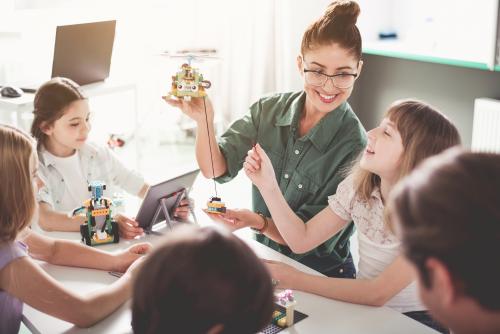
It's crucial to note that a creative teacher frequently operates outside their comfort zone: there isn't a fixed curriculum that provides structure to the learning process which a creative teacher can follow. Innovative exploration leads to contradictions and sometimes negative emotions, and these must be tolerated. A classroom where potentially disconcerting, conflicting events occur is likely to mirror our world more accurately than previous teaching methods. Security and stability tend to be illusory outside the classroom as well. If children experience such lessons, they learn early to handle negative emotions and to navigate their lives successfully.
The creative school
Just as creative thinking benefits from adopting entirely new perspectives, we should also consider fresh approaches in teaching and ask ourselves: How do we specifically prevent creativity in school?
One way is, of course, through monotonous lessons—many of us are familiar with such lessons from our own schooldays. Lessons where students spend more time texting each other than paying attention to the teacher. Additionally, over-structured classes with little flexibility and constant oversight can stifle creativity. Competitive situations where students are either assessed or promised a reward (the proverbial carrot and stick approach) can also hinder creative output. Research shows that groups competing against each other performed worse on creative tasks than those where students simply collaborated.
Another way to suppress creativity is to disregard children's ideas, preventing a creative atmosphere from emerging.
Children are naturally inventive. For example, they invent grammar or word formation rules out of their lack of knowledge, which often brings a smile to our faces. This creative potential can be further cultivated by acknowledging even the smallest of children's creative accomplishments. This acknowledgment enables children to understand the value of their ideas early on. The destination need not always be the starting point; the journey towards the goal is equally significant. Above all, teachers should not limit their appreciation of children's achievements to instances where they are visibly engaged in a creative process. They should be open to being surprised even in situations where creativity is unexpected. Children might be at their most creative when no one can precisely judge how creative their activities truly are.
Everybody is different
It's important to acknowledge that every child manifests creativity in their own unique way. Some children develop ideas through interaction with peers, others prefer solitude, while some need to jot down notes or sketch their thoughts. There are also those who need time for idle musing, letting their thoughts wander, and daydreamers. Some are more tactile-oriented, needing to feel the texture of things to spur the wheels of creativity in their minds. As such, children should be given the freedom to explore their creativity in their own way - and if their approach seems unconventional, give them the extra time they need. Creative output isn't instantaneous, it requires time. To maintain students' motivation, tasks should neither be too easy nor too difficult. The amount of time a child needs to complete a task varies from individual to individual. If there is no pressure to perform, and the child is free to experiment without fear of producing a specific outcome, the most innovative ideas will surface. And it's crucial for teachers to refrain from premature criticism, no matter how unorthodox these ideas might seem. After all, intrinsic motivation – that is, motivation from within – is a key component of the creative process. Although extrinsic motivation in the form of praise shouldn't be dismissed, it's particularly beneficial when tackling convergent tasks - tasks that require logical thinking to arrive at a single solution.

Despite the importance of nurturing and promoting all creative attempts, not every artistic product will necessarily be valuable – we'll touch on this later.
Creating Synergies
Each child has different abilities and weaknesses, and it's the same with their learning styles. Teachers should be aware of their students' weaknesses, but it isn't their duty to eliminate them. According to Olaf-Axel Burow, the focus should be on creating synergies between students who complement each other, just as it should be in professional life. The goal isn't to ensure everyone knows and can do everything; instead, the team should comprise individuals who complement each other. This approach is more attuned to our complex and specialized society. To facilitate this collaborative working and learning, teachers must understand their students' talents and aptitudes, so they can tailor their lessons accordingly and incorporate ample group work phases or workshops. However, before implementing this, teachers themselves need to work on their teamwork skills, as traditionally, they've been lone wolves, tackling the multitude of tasks on their own. When both students and teachers complement each other, the school becomes a field for creativity.
Creative working atmosphere
An environment that encourages creativity is as important as the creative field itself. Classrooms equipped with inspiring working materials, well arranged and not cluttered, provide an array of stimuli for thought and learning. Such spaces significantly enhance children's enjoyment of work and foster enthusiasm for their tasks, more than any reward could. Currently, the school structure doesn't easily allow for flexible room selection and time allocation. But a shift towards greater flexibility is needed; static teaching methods should be replaced with mobile ones. However, this change requires a shift in mindset.
Time and Creativity
Deadlines tend to inhibit creative performance. Why? Under time pressure, people often opt for safe, familiar paths and overlook original, perhaps riskier, solutions. Interestingly, the term "deadline" comes from the prison environment, referring to a line around an institution – anyone crossing it was shot.

Beyond the physical layout of classrooms, the atmosphere within the class is also crucial. An open and trusting atmosphere should be maintained, where no one ridicules the ideas of their classmates, or mocks failed projects or answers. When conflicts are openly addressed and promptly resolved, children gain self-confidence, and it becomes easier for them to develop new ideas.
Artistic subjects
Where better to exercise creativity than in artistic subjects? Creativity can be best expressed in art, music, or language arts. Experiencing art (of any kind) often kindles a desire to create something original. Therefore, teachers should expose students to various forms of art. Indeed, many creative individuals and artists discovered their passion for creative expression, such as painting or writing, during elementary school. If a child's initial encounter with art is captivating and emotional, they'll yearn for more. However, if their first exposure to a play, musical piece, or novel is uninspiring, they may never revisit that art form. This is why Claus Martin objects to the notion "Better bad art than no art at all". He cautions against taking a school class to see a mediocre performance of The Magic Flute, drawing an analogy that someone who starts with low-quality wine is unlikely to become a connoisseur. Only those exposed to high-quality art can cultivate their taste.
Martin also debunks the myth that students are less expressive due to lack of reading. Children and teenagers don't necessarily read less; rather, they consume more low-quality texts (social media posts, short messages, etc.), which negatively impacts their own text creation.
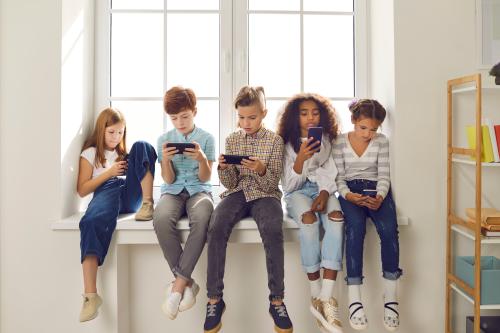
According to Paul Collard, who has overseen and evaluated many school-based creative projects, artistic subjects can pique students' interest in their study material. He cites a play about genetics performed at one school. The students delved into the subject matter during rehearsals and, by the end of the project, achieved higher grades in genetics than students taught in a traditional manner. This was because the students were emotionally engaged and wholly invested in the learning process. When students are challenged holistically in a project, they feel positive, gain self-confidence, and automatically develop greater interest in the subject matter. Emotions and motivation are deeply intertwined – which is why emotions should be integrated more into the classroom. Rather than simply studying genetic diseases in biology class, the teacher could stimulate a debate on the topic. Interestingly, creative students tend to exhibit a particularly high degree of empathy.
Creativity also means envisioning a different future – and art opens the door to this possibility.
Nadine Nett suggests an interdisciplinary approach in school, examining an opera in music lessons, analyzing the corresponding libretto in language arts – and exploring the historical context in history class. This comprehensive approach provides a more complete picture of a subject, making learning more meaningful and engaging.
Promoting Autonomy
Traditional frontal teaching, where contexts are developed based on questions, often views creative influences as disruptive. Instead, creativity should be a teaching objective itself, with students actively participating in shaping the lessons and independently establishing learning objectives. In class, they shouldn't just copy the teacher's examples, but think for themselves and work autonomously on tasks. When students achieve self-set goals, they feel fulfilled and eager to discover more. As such, fostering students' autonomy in the classroom should be viewed not as a luxury, but as the foundation of education. But to realize this, the education system needs a significant overhaul.
The success of this concept is demonstrated by Montessori schools. Studies show their graduates excel in divergent thinking compared to those educated in conventional schools. The children in Montessori schools learn in an inspiring environment that encourages independent thought. They understand the learning objective for certain units, but are free to choose their own path to reach it (for more information on Montessori schools, see our article "Learning for Life - A Look at Education According to Montessori Principles").
Allowing creativity in the classroom invariably fosters a love of learning. And it's not just beneficial for students. Teachers also find more joy in teaching content, inspired children. Students intuitively perceive this and feel more confident asking questions, triggering new trains of thought. When teachers adopt a creative approach, they too become happier overall. What might such a creative approach look like? Teachers could ponder how characters like Tom or Jerry would deliver their lessons. Hence, teachers should also have flexibility and freedom in designing lessons.
An inspiring environment also includes allowing students to arrange and decorate their classroom as they see fit. After all, when students feel comfortable in an environment, they find it easier to imagine, fantasize, and think creatively.
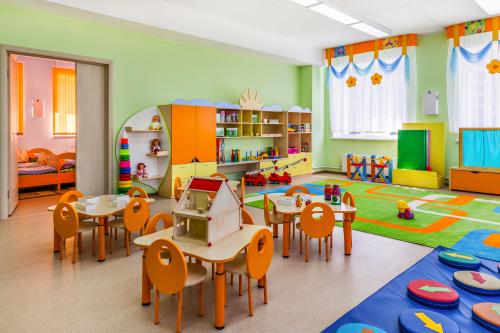
In next part, we'll provide a wealth of practical examples on how to stimulate your children's creativity. Prepare to be inspired!
All sources can be found at the end of Part 4.

Komentáre